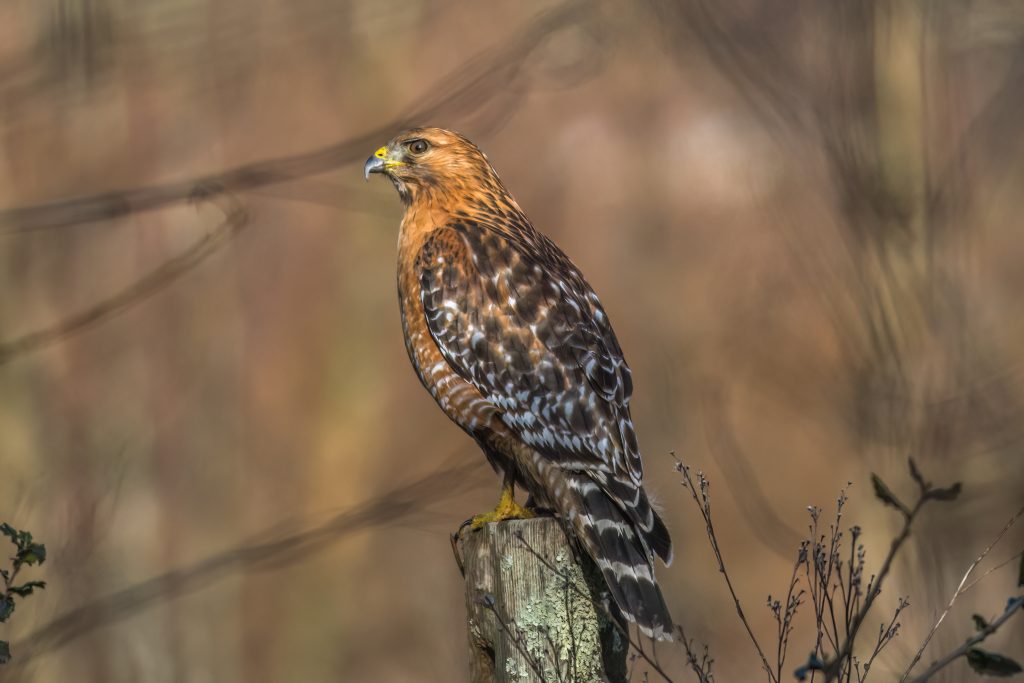
Photo by Carlos Porrata
www.carlosporrata.com
Last spring, I watched a mated pair of mocking birds, with clumps and long strands of grass in their beaks, drop by turn into the decorative tree in my neighbors’ front yard. When they were absent, I would sneak a peek, try to spot the nest, but I never could. It was well hid. The tree was barely eight feet in height, so the nest was less than that off the ground.
Then everything stopped. There was no evidence of brooding, feeding or fledging. There was also a feral cat that had taken to resting on the stoop of the house across the street, where it was fed and watered. The cat was bold, perusing our lawn, crouching under our car, even skulking across the railing of our porch, despite our sixty-pound canine staring it down through the large picture window, avid and murderous. These facts together, nest + cat, may be a three-word story.
In great numbers, chestnut-backed chickadees, lesser goldfinches, Bewick’s wrens and white- and golden-crowned sparrows flitted through our yard. For a day or so, a flock of cedar waxwings graced our mulberry tree, which had not yet fruited. Still, the waxwings sat amongst its upper branches, facing every which way, silent and still. Occasionally, I would hear the quiet, high-pitched tseeee that is the only sound I have ever heard from them.
As the spring progressed, house finches became the rule. Flocks, pairs, soli. Gorgeous bright red plumage on the males, plain brown or a wisp of deep rose on the females. For years, crows dominated the street, so the return of song birds had been welcome and cause to celebrate. The finches continued to flock and feed and nest well into late June. It was almost summer and the finches were still there.
We had a resident red-shouldered hawk, a gorgeous raptor, frequently dogged by crows. There were terrific aerial shenanigans as the crows attempted to run the hawk off the block. The hawk was intrepid. While sitting atop a telephone pole or the neighbor’s pitched roof, if a crow dive-bombed too close to its head, it might shrug. More often, it regally ignored the flapping jet cacophony.
One afternoon, I watched a battle waged from a plane tree on our block. Five crows worked in concert to dislodge the hawk, which was tucked into the leafy branches, still as death. The crows took turns whizzing past the hawk in vociferous rage. I assumed a crow’s nest in the tree, but then I saw the body of a squirrel in the middle of the road, likely hit by a car, or so it seemed. I stood a long while, watching.
The hawk flew out of the tree once, settling on the telephone wire across the street, above the road-killed squirrel. The crows organized themselves into a mob and circled the hawk, who then returned to the tree. This happened once again, a little later, the hawk seeming to draw the attention of the crows to the height of the telephone wire, as if this were the whole game, moving from tree to wire and back again.
The third time the hawk left the tree, it was as if the crows had come to expect that they would just be buzzing the hawk on the telephone wire and were bored with it. They were slow to follow, and the hawk, instead of flying to the telephone wire, swooped down to the street, gathered the squirrel corpse in its talons, and powered itself up from the ground into the height of an enormous eucalypt one block over. Dead-weighted with a dangling squirrel, the hawk easily outran its murder.
Through binoculars, I watched the hawk tear into its meal, perched under cover of foliage, safe from the loud whorling scrim of pissed-off crows.

Photo by Eric Mendelson